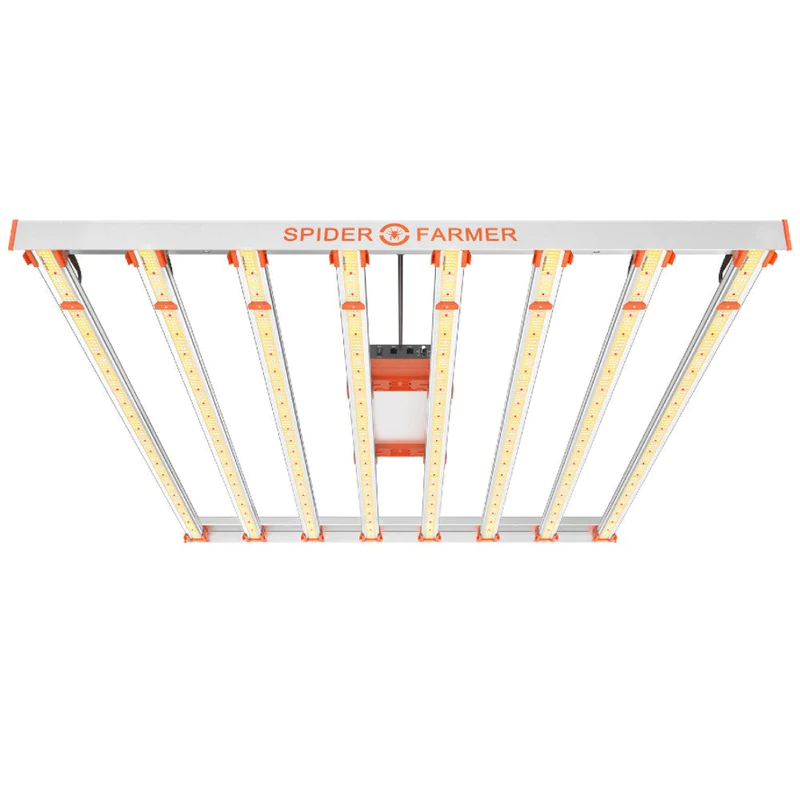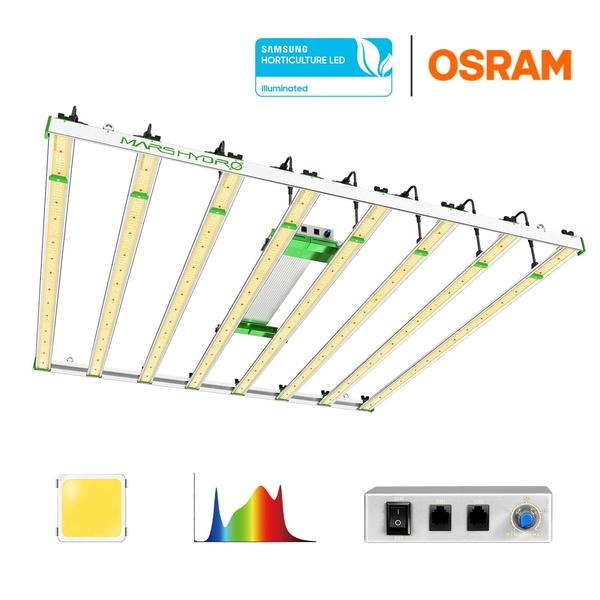Why It's Difficult to Choose the Right LED Grow Lights
Growing plants indoors without natural light can be a challenge, but LED grow light strips offer a solution. LED grow light strips are easy to install, adjustable for a variety of growing needs, and relatively cheap and efficient. These grow lights not only help support the growth of plants, but also help them grow to their fullest potential.
Why It’s Difficult to Choose the Right LED
Many people think that choosing the right LED for their cultivation facility is easy. But in reality, choosing the right LED is a decision that should not be underestimated. Making the right choice is notoriously difficult.
The greatest complexity is mainly due to the large number of different products on the market — which can make it difficult for many people to make a decision.
In addition to the sheer number of options available to people, another complicating factor can be the difficult and often confusing word choices that manufacturers often use. By using complex and convoluted wording, many buyers will not really understand the specifications of the LED lights they are purchasing.
ECO Farm Z8–800 Samsung LM301B LED Grow Light

Features:
The ECO Farm LED grow light is equipped with SAMSUNG LM301B chip and 8 high-efficiency aluminum rods to ensure high-efficiency PPE 2.7umol/J, better heat dissipation, and long service life. Compared with old plant lights, the average PPFD is increased by 30%, and the yield and quality are increased by 50%. 8 LED growth lights, each rod is covered with high-grade glue, waterproof and easy to clean, not easy to be filled with dust. This plant growth light also uses a special dimmer, which can precisely adjust the brightness. 0–10 levels are optional. This means that you can see clear brightness levels and record while adjusting. No need to worry about differences. At the same time, it also has an ideal full-spectrum and amazing heat dissipation: excellent full-spectrum mixing of white, blue, red, and ultraviolet light, IR LED (3500K, 660nm and IR 760nm & 396nm UV), close to natural sunlight. The spectrum applies to the entire stage of indoor planting.
Spider Farmer G860W Full Spectrum LED Grow Light

Features:
This Spider Farmer LED Grow Light features an even peripheral PPFD score for even coverage, ensuring maximum light per plant. The elongated light bar design also ensures a more even distribution of light, reaching all edges and corners. The strip grow light design and the aluminium heatsink on the back contribute to better airflow and good heat dissipation. The G860W Garden Light features a detachable driver and 6.56" long power cord to reduce ambient heat in the grow space for longer life. The LED diodes are coated with water repellent, so they are not afraid of a wet environment. Dimming daisy-chaining allows you to link up to 60 G680W Series grow lights together — dimming multiple lights simultaneously. Widely used in commercial cultivation, vertical farming, home gardens, home cultivation, CO2 systems and hydroponics.
MARS HYDRO FC 8000 SAMSUNG LM301B OSRAM Commercial LED Grow Light

Features:
Mars Hydro grow light mounts 2968 pcs Samsung LM301B & Osram 660nm diodes. Make use of more than twice as many LEDs as comparable lights to drive the grow lights with a low current to stay away from overdrive. Quality guaranteed and high efficiency up to 2.9 μmol/j. This grow light has professional spectra for plant production to enhance blue and red light as a specific spectral combination, boosting plant growth while improving the year-round yield and product quality. Multi-light bar style and dense layout of light diodes enable FC8000 LED grow light to have PPFD values in the range of 1000–1500 μmol/m²/s throughout the effective coverage area. The dimming function is available for 0–100% variable brightness, adapts to different plant growth stages. Max 30 lights can be daisy-chained together and be controlled by one master light
What to Look for in Grow Lights
If none of the products in our list above caught your eye, you’ll need to explore your options elsewhere. As you do, it helps a lot to understand the general factors that make up a high-performance LED grow light. The next sections will help you do this.
Energy Efficiency
Consider the fact that most indoor growers will need to have their grow lights on most of the day if they want their plants to get the best results. Sometimes your plants may require you to leave these lights on for longer than 15 hours in a day. Such long periods of use make energy efficiency and power consumption a top concern when picking out grow lights.
While LED lights tend to be more energy efficient than other bulbs, you will still find differences in energy use between individual LED grow light models. At first glance, these differences may seem minor. However, choosing more energy-efficient grow lights can lead to surprisingly significant energy savings in the long run.
At times, you may be tempted to choose a less energy efficient model, as these lights usually have a lower initial cost. But in many cases, more energy-efficient lights often prove to be the more economical choice in the long run, even though they cost more to begin with.
Cool Operation
Overheating can be a problem with your grow lights for no surprising reason. When you run lights continuously for hours, it’s easy to see how the constant light output can create intense heat build-up throughout the system.
Some grow lights are specifically designed to prevent significant heat build-up. As we mentioned before, grow lights that use LEDs are generally cooler in general. But the overall design of the grow light will also affect its working temperature.
Sometimes, overheated grow lights can even be hot to the touch when lit. By comparison, the best grow lights on the market demonstrate an impressive ability to stay cool while working just as efficiently as the competition.
Lifespan And Longevity
This category applies to almost any garden product and is just as important when choosing grow lights. The quality of the materials that make up luminaires and the integrity of the construction process that assembles them are two of the most important factors that affect the life of a luminaire.
Extremely low-cost grow lights can come with some low-quality materials and components. These products will not last, so we always recommend that you use grow lights from a reputable manufacturer.
Before deciding to buy a grow light, take the time to research its listed materials and the manufacturer’s reputation for producing high-quality products. If both of these factors are checked, the lamp in question will likely serve you well for a long time.
Spectrum
The idea behind grow lights is to mimic the light plants receive from sunlight when growing outside. Interestingly, you can use any light to reproduce this effect. The sun’s rays are in a specific spectral range, and grow lights try to reproduce that range.
Some grow lights are better than others at reproducing the quality of light that allows plants to photosynthesize. The best of these lights usually bill themselves as full-spectrum. Full-spectrum lights do an excellent job of matching the quality of light naturally produced by the sun while supporting plants at every stage of their growth.
Spectrum is a somewhat complicated topic, but one you should know if you’re in the market for a new grow light. Thankfully, top manufacturers list the spectrum their lights produce so you can clearly compare products.
Increase Space Coverage
One factor that many people don’t realize when purchasing their first grow lights is growing space coverage. In short, each grow light is capable of providing light to cover areas of varying sizes. The area covered is related to the wattage of the associated lamp.
In general, a good rule of thumb is about 30 watts of light output will allow about a square foot of growing space. It’s your job to match the wattage of your lights to the square footage your plants will take up. Too little wattage and your plants won’t get all the light they need, too much and you’re wasting energy.
Take the time to consider the plants you wish to grow and predict their mature crown size. Knowing these dimensions is critical when you are choosing the ideal wattage for your grow lights.
Conclusion
Any of these grow lights can be the perfect lighting solution for your indoor garden. No matter what your budget is, how much extra space you have, or how greedy your plants are for sunlight, there are handy grow light options available.
评论
发表评论